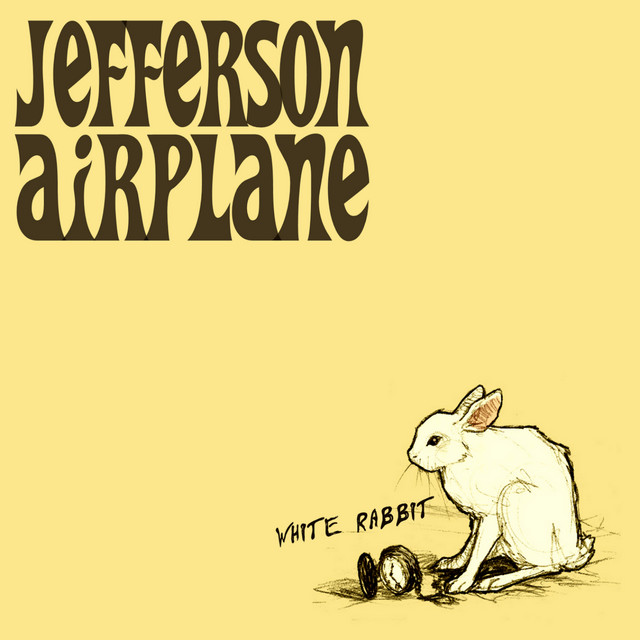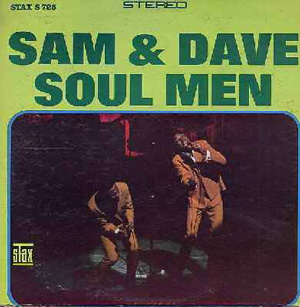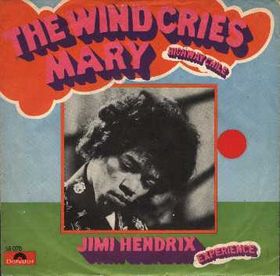 “What a Wonderful World” by Louis Armstrong is more than just a song—it is a gentle reminder of hope and beauty in the face of chaos, conflict, and cynicism. With its lilting melody and Armstrong’s unmistakably gravelly, tender voice, the song has transcended its original release, becoming an anthem of optimism for generations across the world. Written during a period of social and political upheaval, “What a Wonderful World” carries the emotional weight of its time, while also offering a timeless and universal message that continues to resonate deeply with listeners more than half a century later.
“What a Wonderful World” by Louis Armstrong is more than just a song—it is a gentle reminder of hope and beauty in the face of chaos, conflict, and cynicism. With its lilting melody and Armstrong’s unmistakably gravelly, tender voice, the song has transcended its original release, becoming an anthem of optimism for generations across the world. Written during a period of social and political upheaval, “What a Wonderful World” carries the emotional weight of its time, while also offering a timeless and universal message that continues to resonate deeply with listeners more than half a century later.
The song was written in 1967 by Bob Thiele (under the pseudonym George Douglas) and George David Weiss. It was specifically composed with Louis Armstrong in mind, a jazz legend whose legacy had already been firmly cemented through decades of transformative performances and recordings. At the time, Armstrong was in his mid-60s, seen by many as a relic of a bygone jazz era, yet still beloved by millions. “What a Wonderful World” was a calculated but deeply personal gesture—one that combined Armstrong’s warm, grandfatherly persona with a message of peace and serenity in a turbulent world.
When the song was recorded on August 16, 1967, the United States was immersed in the Vietnam War, and racial tensions had reached a boiling point, especially in cities like Detroit and Newark. Riots had broken out that summer, and the counterculture movement was growing stronger with each passing day. Amid all of this, Armstrong, a Black man who had grown up in poverty in New Orleans and experienced firsthand the ravages of racism, recorded a song that eschewed protest and outrage in favor of quiet reflection. It was a deliberate counterpoint to the noise of the era. The lyrics, simple and unadorned, highlighted the things often overlooked in the rush of modern life: trees of green, red roses too, skies of blue, clouds of white, the bright blessed day, the dark sacred night. It was a hymn to life’s everyday wonders.
And yet, the simplicity of “What a Wonderful World” belies its profound depth. Armstrong sings about the colors of the rainbow and the smiles on people’s faces, but behind every phrase is a lifetime of joy, sorrow, and experience. His delivery is not naive—it’s seasoned, soulful, and rooted in hard-won wisdom. When he croons, “I see friends shaking hands, saying how do you do / They’re really saying I love you,” there’s a pause, a warmth, a sense of something deeper than just pleasantries. Armstrong is not merely celebrating beauty—he’s reminding us that it exists even when the world seems darkest.
Despite its now-iconic status, “What a Wonderful World” was not immediately embraced in the United States. The record label ABC Records reportedly did little to promote it domestically, in part because their president at the time disliked the song and was resistant to its release. As a result, the song failed to chart in the U.S. upon its initial 1967 release. However, across the Atlantic, it was a different story. In the United Kingdom, “What a Wonderful World” became a smash hit, reaching number one on the UK Singles Chart and becoming one of the biggest-selling singles of 1968. It was only after Armstrong’s death in 1971—and years later, thanks to its prominent placement in films—that the song found its footing in American popular consciousness.
The turning point in the song’s American reception came in 1987, when it was featured prominently in Barry Levinson’s Good Morning, Vietnam. The film, starring Robin Williams as an irreverent radio DJ in the Vietnam War, used the song in a poignant montage showing the contrast between the idyllic imagery of the lyrics and the brutal reality of war. The juxtaposition was both heartbreaking and illuminating, reminding audiences that Armstrong’s “Wonderful World” was not naive, but defiant—a refusal to let cynicism and destruction obscure the beauty that still existed in everyday life. This use of the song struck a nerve, and suddenly it reentered the American charts, nearly two decades after its original release.
From that moment on, “What a Wonderful World” became a permanent fixture in global popular culture. It was used in films, commercials, weddings, graduations, and even funerals. It became shorthand for sentimentality, for hope, for nostalgia. And perhaps most importantly, it became inseparable from Louis Armstrong himself. Though Armstrong’s contributions to jazz were enormous—he revolutionized the genre with his trumpet playing, vocal phrasing, and stage presence—it is “What a Wonderful World” that most people today associate with his name. The song became the emotional summation of his career and the spiritual embodiment of his personality.
Louis Armstrong was a man of contradictions and complexities. Born in 1901 in New Orleans, he grew up in extreme poverty, was arrested at age 11 for firing a pistol in public, and spent time in a boys’ home where he learned to play the cornet. Over the decades, he would rise to become one of the most influential musicians in American history, helping to popularize jazz and bring it into the mainstream. His virtuosic trumpet playing, gravelly singing voice, and magnetic personality made him a beloved figure around the world. But he also faced criticism, especially in the later years of his life, for being seen by some as apolitical or overly accommodating in the fight for civil rights. That criticism often failed to appreciate the deeper subtext of his music and his method of resistance—not through confrontation, but through embodiment of dignity, warmth, and human connection.
“What a Wonderful World” was perhaps his ultimate statement of that philosophy. It’s a quiet protest, a soulful prayer, a musical embrace. It doesn’t demand change through anger but encourages it through love. Armstrong once said, “Some of you young folks been saying to me, ‘Hey, Pops, what do you mean what a wonderful world? How about all them wars all over the place, you call them wonderful?’ But how about listening to old Pops for a minute. Seems to me, it ain’t the world that’s so bad but what we’re doing to it. And all I’m saying is see what a wonderful world it would be if only we’d give it a chance.” That quote reveals everything one needs to know about the song’s intent and its creator.
Musically, “What a Wonderful World” is lush and restrained. The orchestration, arranged by Artie Butler, features gentle strings, soft horns, and a slow, swinging rhythm that perfectly frames Armstrong’s vocal. It’s not a jazz tune in the traditional sense, nor is it strictly pop or soul. It exists in its own space, a genreless meditation. And Armstrong’s delivery—delicate, gravelly, filled with pauses and inflections—transforms what could have been a saccharine ballad into something sacred. There’s something spiritual in the way he sings it, as though he’s offering a benediction rather than just a performance.
Over the decades, “What a Wonderful World” has been covered by countless artists—from Tony Bennett to Israel Kamakawiwoʻole to Joey Ramone—each bringing their own spin to the track. But none have captured the essential balance of sweetness and sorrow that Armstrong did. His version remains definitive because it’s infused with a lived experience that cannot be duplicated. The song gains its power not from the melody or even the lyrics, but from the unmistakable soul that Armstrong pours into every note.
It is also a song that has been called upon in moments of national mourning or celebration. After the September 11 attacks, the song was used in tributes and memorials as a way to process grief and find solace. In times of crisis—whether war, natural disaster, or personal loss—“What a Wonderful World” has often served as a musical balm. It reminds people not of what has been lost, but of what still remains. That’s part of why it endures. It speaks to the heart, to the child within, to the part of us that longs to believe that kindness, beauty, and connection are still possible.
For educators, parents, and artists alike, the song also offers a gentle gateway into discussions of empathy, gratitude, and mindfulness. It’s been used in classrooms to teach children about the environment, in therapy sessions to help patients reflect on the positives in their lives, and in music therapy for the elderly as a source of emotional grounding. It’s a song that opens doors, that softens defenses, that makes people feel—even if just for a moment—that things might be okay after all.
Its simplicity is its genius. In an age where songs are often loaded with production, metaphor, and layered meanings, “What a Wonderful World” dares to be direct. It doesn’t overcomplicate. It invites listeners to slow down, take a breath, and notice the beauty that surrounds them. And in Louis Armstrong’s voice, that invitation becomes something holy.
Though Armstrong passed away in 1971, just a few years after recording “What a Wonderful World,” the song ensures his legacy lives on not just as a jazz icon but as a symbol of hope. It was one of the last major recordings of his life, and in many ways, it feels like a farewell—a final message to the world from a man who had seen it at its worst and still chose to celebrate its best.
Today, “What a Wonderful World” remains one of the most beloved songs of all time. It is sung at weddings and funerals, broadcast during tributes and anniversaries, and streamed by millions who find comfort in its message. It stands as a counterweight to cynicism, a melodic reminder that wonder is all around us, even when we forget to look.
When Louis Armstrong sang “What a Wonderful World,” he wasn’t pretending the world was perfect. He was offering a choice—to see beauty in spite of pain, to seek connection amid division, and to hold on to hope even when it’s hard. It’s not just a song. It’s a perspective. And that’s what makes it not only wonderful—but essential.


